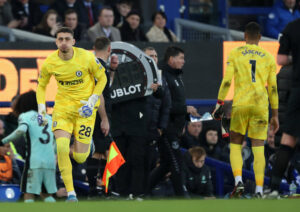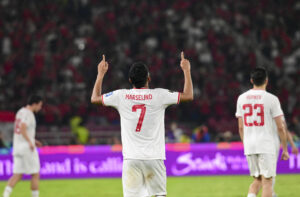Manchester City have set out to become one of the pillars of world football. From their first team to their academy to their system of clubs, they want to create something that will last. But lasting as a pillar in football takes an influx of great players from anywhere they can be found. That starts with a strong youth academy, something City have laid the foundation for and are now reaping the benefits.
How Manchester City Built an Academy to Last
The Value in Youth
Whenever a club is bought by an owner with a tone of money, there is a general trend they follow. The owner comes in willing to spend all kinds of cash, but eventually either runs into sanctions or runs out of money to spend. Either of those outcomes can significantly damage a club, no matter the size. There are major examples like AC Milan, Deportivo La Coruna and Newcastle; City and Paris Saint-Germain are possible future examples considering the recent leaks about their finances.
The easiest way to stave off either of those outcomes? Investing in youth development. The youth team can be one of the most important assets that a club can have. Though many youth team players across Europe are pushed to the side in favour of big money transfers, that model is unsustainable in the long-term. Every team needs an influx of players from its youth team to, if nothing else, fill the edges.
The Model
Part of what made Pep Guardiola’s Barcelona side so great was their ability to call upon quality young players in case of injury, rotation or bad run of form. Players like Pedro, Sergi Roberto, Thiago, Rafinha, Cristian Tello, Marc Bartra and more. They formed the edges of the squad that allowed Barcelona to make big money purchases throughout that window.
Manchester City are aiming to do the same thing, with the architects of that very system. It started when City signed Fernan Soriano and Tixi Begiristain, two ex-Barcelona executives. Soriano was the brains behind Barcelona’s massive revenue gains over the last 15 years. He engineered the first club sponsorship deals and laid the foundation for the revenue juggernaut we see today.
Begiristain is the football brain; the ex-winger for Johan Cruyff’s Dream Team was the chief football decision-maker during his time at Barcelona. He also, much like Guardiola, has very strong Cruyffist beliefs about the importance of the youth team. With his and Soriano’s respective track records, it’s no wonder City were so keen to bring them in.
The Results
Both took charge of City in 2012 and have had mixed results with their transfers and strategies in the years since. But one place they clearly got right was the youth academy. They have invested heavily in the idea of building a strong youth system at Manchester City. That includes investing in top quality facilities and scouting around the globe.
But an academy is judged on its products, not what goes into it, and City have produced their share of quality. This starts with the players who have left the club, mostly because they were looking for first-team chances. Then-youngsters like Adrien Rabiot at PSG, Denis Suarez at Barcelona, Aaron Mooy at Huddersfield, and Jadon Sancho at Borussia Dortmund.
There are even more names beyond those. 12 players from the Manchester City Academy have become full internationals for their country. That a much higher number than most would expect from any big club, especially one with City’s reputation. Expect those numbers to grow as well. There are currently five U21 internationals on City’s books, with all of them expected to be figures in the full national teams.
Diaz & Foden
Of that U21 group, there are two names standing high above the rest; Brahim Diaz and Phil Foden. One is a Spanish U21 winger with great feet and an even better sense of space, where to go when and so on. But the other, Phil Foden, is a midfielder, almost the English clone of David Silva. He’s small, he’s quick, he’s elusive and he can command a midfield.
Pep Guardiola has made a point of exposing both of these two to the first team during this incredible run of success. Though, so far this season, Foden has come to the forefront. He’s already made ten appearances for City this year, including a goal in the League Cup. But it’s his performances that have been the most impressive.
Foden has only made six substitute appearances in the Premier League for City, but they have particular value. In each case, he has been subbed on for David Silva, Manchester City’s 32-year-old icon. This is not a random occurrence, this is Guardiola testing his succession plan. Eventually, it will be Phil Foden starting in that Manchester City midfield, as the club indicated by giving Foden a new six year deal last week.
The Future
What will be the most important thing for the club is to trust the academy even when it hasn’t been producing. Even an academy like Barcelona’s goes through its ups and downs. La Masia haven’t produced a first-team starter since Sergi Roberto more than seven years ago. Their lost faith has caused some of their best products to look elsewhere.
Manchester City will have work to do to avoid a trap like that. With a squad as big and strong as theirs, it can be easy to overlook academy products but the academy is vital to first team success. Also, with so much money required to buy even a decent bench player, why not promote them for cheap every chance you get?
Main Photo






